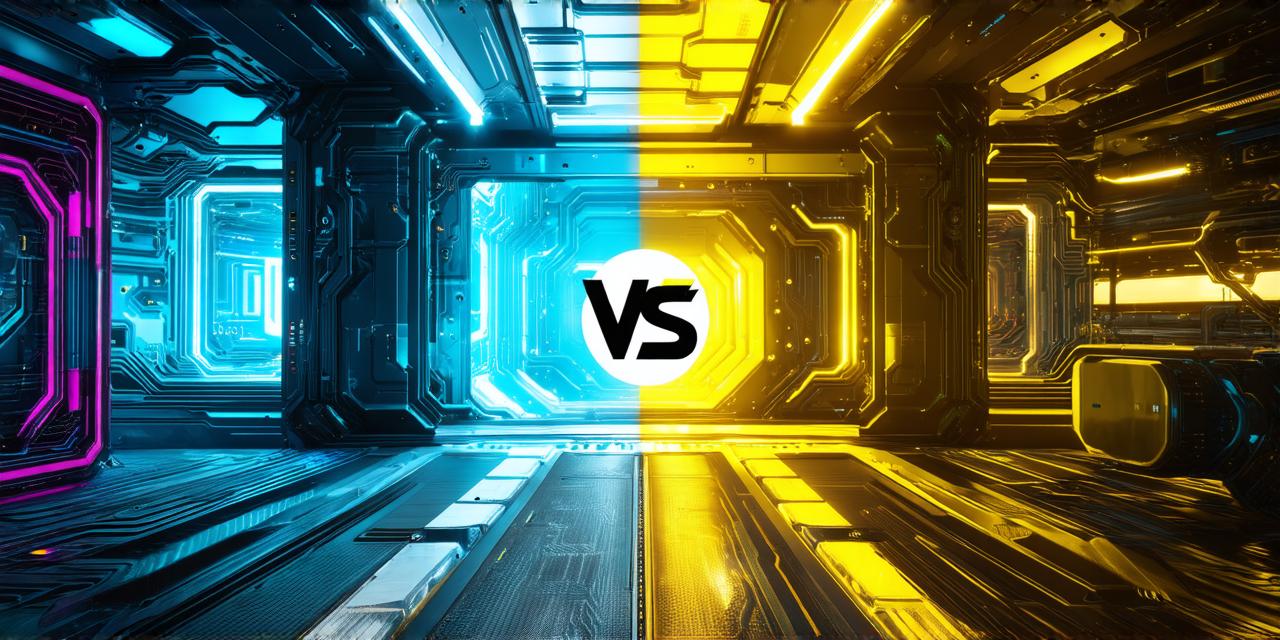Introduction:
Game development has come a long way since its inception, with advancements in technology and software enabling developers to create increasingly complex and immersive experiences. Unreal Engine 1 (UE1) was released back in 1998, while Unreal Engine 5 (UE5) was unveiled in 2021. This means that there has been a significant amount of development time between the two releases, with UE5 building on the foundations laid by its predecessor to provide developers with an even more powerful tool for game creation.
What is Unreal Engine 1?
Unreal Engine 1 was the first version of Epic Games’ popular game engine. It was designed to be a flexible and scalable platform that could be used for a wide range of applications, including games, movies, and virtual reality experiences. UE1 featured support for a variety of programming languages, including C++ and C, as well as a number of tools and features that were designed to help developers create interactive 3D worlds.
What is Unreal Engine 5?
Unreal Engine 5 was released in 2021, building on the foundations laid by its predecessor. UE5 includes several major updates that have significantly improved the capabilities of this powerful tool, including support for real-time ray tracing, improved performance, and a number of new tools and features designed to help developers create even more immersive and interactive experiences.
Real-Time Ray Tracing:
One of the most significant updates in UE5 is the inclusion of support for real-time ray tracing. This feature allows developers to create photorealistic graphics that are indistinguishable from those created using traditional computer-generated imagery (CGI) techniques. Real-time ray tracing is a complex and computationally intensive process, but it can produce stunning visual effects that were previously impossible to achieve in real-time.
Improved Performance:
Another major update in UE5 is the improvement in performance. The new version of the engine includes several features designed to optimize performance, including support for multi-core CPUs and GPUs, improved memory management, and a number of new tools and features that are designed to help developers reduce the impact of their code on system resources.
New Tools and Features:
UE5 also includes a number of new tools and features designed to help developers create even more immersive and interactive experiences. Some of the highlights include:
<strong>A new dynamic lighting system that allows developers to create realistic, changing light sources in their scenes.</strong></li><strong>Improved support for virtual reality (VR) development, including support for hand tracking and improved performance on VR devices.</strong></li><strong>A new physics simulation system that includes support for complex rigidbody dynamics and improved realism.</strong></li><strong>Support for new scripting languages, including Blueprints Visual Scripting and C++20.</strong></li>
Comparing UE1 and UE5:
Now that we’ve taken a look at some of the major updates in UE5, let’s compare it to its predecessor, UE1. The following table provides an overview of some of the key differences between the two engines:
| <strong>Feature</strong></th> | <strong>Unreal Engine 1</strong></th> | <strong>Unreal Engine 5</strong></th> |
|---|---|---|
| <strong>Supported Programming Languages</strong></td> | <code>C++ and C</code></td> | <code>C++ and C, plus Blueprints Visual Scripting and C++20</code></td> |
| <strong>Ray Tracing Support</strong></td> | <code>Not available</code></td> | <code>Available with real-time ray tracing support</code></td> |
| <strong>Performance Improvements</strong></td> | <code>Limited</code></td> | <code>Significant improvements, including support for multi-core CPUs and GPUs, improved memory management, and a number of new tools and features designed to optimize performance</code></td> |
| <strong>Virtual Reality Support</strong></td> | <code>Not available</code></td> | <code>Improved support for VR development, including support for hand tracking and improved performance on VR devices</code></td> |
| <strong>Dynamic Lighting System</strong></td> | <code>Not available</code></td> | <code>Available with a new dynamic lighting system that allows developers to create realistic, changing light sources in their scenes</code></td> |
| <strong>Physics Simulation System</strong></td> | <code>Limited</code></td> | <code>Includes support for complex rigidbody dynamics and improved realism</code></td> |
<strong>Summary:</strong></h3>
Unreal Engine 5 represents a significant leap forward in game development technology. With its new features and capabilities, UE5 provides developers with an even more powerful tool for creating immersive and interactive experiences. While there are some limitations to the platform compared to its predecessor, the improvements made in UE5 make it an incredibly versatile and scalable platform that is capable of producing stunning visual effects and complex game mechanics. If you’re a developer looking to create the next big hit game or immersive VR experience, Unreal Engine 5 is definitely worth considering.
<strong>FAQs:</strong></h3>
- <code><strong>What are the major differences between Unreal Engine 1 and Unreal Engine 5?</strong></code> <br> * UE5 includes support for real-time ray tracing, improved performance, and a number of new tools and features designed to help developers create even more immersive and interactive experiences.</li>
- <code><strong>Does Unreal Engine 5 include support for hand tracking in virtual reality development?</strong></code> <br> * Yes, UE5 includes improved support for VR development, including support for hand tracking and improved performance on VR devices.</li>
- <code><strong>What programming languages are supported in Unreal Engine 5?</strong></code> <br> * In addition to C++ and C, UE5 also supports Blueprints Visual Scripting and C++20.</li>
